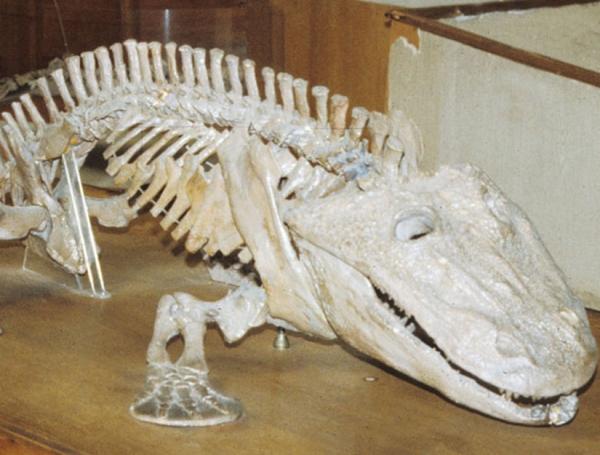843
Skin and bone cover early tetrapods mechanism for reducing carbon dioxide served

"Skin bones on the top of the skull and the front of the shoulder girdle are a common feature of bony fish, as they have scales in the skin, together with the components of skin bones," said study author Kristin Janice, told Discovery News.
Inspiration for the start of the study was 10 years ago when a co-author Daniel Warren noted that modern leopard frog uses bone skin area to buffer capacity of carbon dioxide. According to the researchers - frogs, turtles and caimans are doing the same.
Janice explained that all the birds, mammals and reptiles use special breathing edge to ventilate their lungs, allowing you to consume oxygen and produce carbon dioxide. Amphibians can not do this, but they are small enough so that they can use the skin to release CO2. Without such systems, the animals would die from the overflow of the body of carbon dioxide.
"If the content of CO2 in the blood increases, it mainly comes in contact with water: H2O H2CO3 equals plus CO2, and this carbonic acid" says Janice.
Fish can get rid of CO2 through their gills, but their gills only work in water. Early tetrapods probably encountered many difficulties when they ventured to leave the water, probably lured with food. It would be like people suddenly forced to live in the ocean without the existence of the necessary technology.
As a result, the first four-creatures possibly developed bone and other non-structural mineral growths to neutralize the acidity. As you know - calcium and magnesium ions that enter the blood, act as a buffer acidity.
The authors suggest that a direct proof of their theory can be obtained by identifying a chemical or structural component of bone in the skin of today's animals, who use it to neutralize CO2 saved with minerals, and then find the same characteristics in the fossil record of early tetrapods.
Ancient people of the Ice Age had lived for some time with an arrow in his back
Human cells have developed the ability to protect an important genetic material























